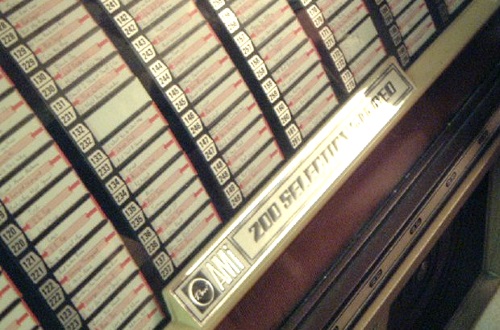Let’s talk about risky business.
Back in 2012, Felix Baumgartner jumped out of a capsule at 120,000 feet above the earth. I played “Lost in Love” by Air Supply on the jukebox at the local bowling alley.
Which was riskier? I’m not sure.
There I was, standing in the pit at the bowling alley. I knew “Lost in Love” would come up next. My friend Dave began throwing his bowling ball down the lane when the song started.
In one fluid motion, he retained control of the ball and turned around, glaring at me. He asked, in a not so kind way, “who played the song?”

Why did I play such a sappy love song from the 80s? I played it because my bowling buddies and I grew up in the same generation and everyone loved Air Supply. But what I discovered that night at the bowling alley is that while everyone loved Air Supply in the 1980s, no one ever wanted to admit it.
Here’s the kicker, I’m still glad I played it. I have a solid track record with producing great song lists on the jukebox because I’m not afraid to take a risk. I’m not afraid to play songs that aren’t on the top-40 list. I enjoy picking deep cuts by popular artists. Sometimes they work, sometimes they don’t.
And when I see other people dancing or grooving to the risky songs, I know my risk paid off.
Better Mixing Means Being Risky
You could mix the same way for years and for the same group of people. You might not even get any complaints. But does that mean you have the best mix? It might mean you are only playing it safe. You have to be risky in your mixing to find the line between “much better” and “whoops, that’s not good.”
And while you *can* do this during the church service, I recommend starting your risky mixing during the sound check.
How To Mix Risky
1. Test the extremes. I’ve used a ton of reverb on drums to get a better sound. Played alone, they sounded too big for the room, but played in context of the other instruments, they sounded great.
The same goes for EQ. Try massive boosts and cuts with a sweepable EQ and listen to the difference. This can help you get out of the “standard” sound. You might find a way better setting (“way better?”—did I just write that?). Or, you might find you had it right all along.
2. Mix the song as an arrangement. This can turn out great. It can also end in a fiery pile of XLR cables, mixing equipment, and your body being roasted on an open spit. (Well, it’s not that bad.)
Seriously, it is something that can take your mix to the next level. Actively mix the song so you’re making EQ and effects changes for a bridge or for a chorus. Make EQ changes on the last verse.
A few examples would be adding more reverb to vocals during a chorus or bringing down the volume and impact of the bass and drums in the last verse of a song.
You might even do the opposite at the beginning of the song. In such a case, you’d have the drums / bass farther back in the mix when the song starts and in the first chorus, you push them forward for more impact.
I’ll be honest, the first few times you do this, it will feel risky. Once you do it a few times and see the positive impact it makes, you’ll want to do it more often and it will feel less risky.
**Please note that you should respect the worship leader and follow any specific mixing arrangements they might have in place like “keep the drums soft in this song.”
3. Start from scratch. Walking into the sound booth with the same band on the same channels, it’s easy to leave the EQ and other mix settings the same.
Set everything back to the defaults and build the mix from scratch. This might sound risky, and if you aren’t comfortable mixing, then it will be.
**Tip: many digital mixers have scene settings so you can save your standard mix and call it back up at any time.
4. Try something new. Need I say more?
The Take Away
Your mix and mixing skills will improve when you start taking risks. You will fail. And that’s totally OK. And most of the failures will be during sound check when you’re the only one that notices.
I’ve mixed a song as an arrangement during sound check and it sounded great; then, doing so during the service, it didn’t sound right. I wasn’t roasted over an open pit. I simply returned the overall song mix to the original mix settings and let the rest of the song play on without active mixing.
Go, be risky with your mixing! You can always say, “Chris said it was OK.”




















